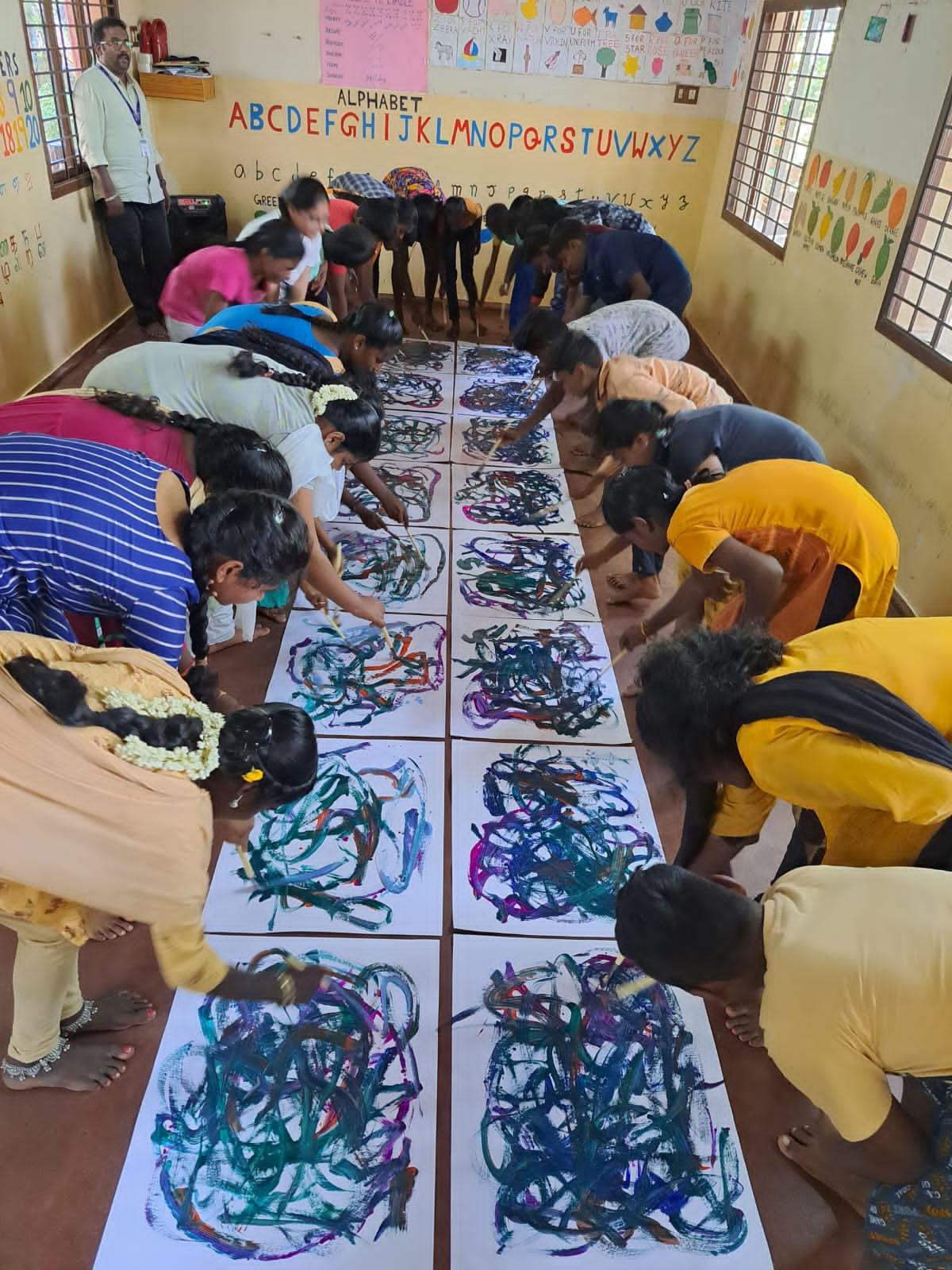Penned by Ms. Romila Sil (Dance Movement Therapy facilitator-in-training)
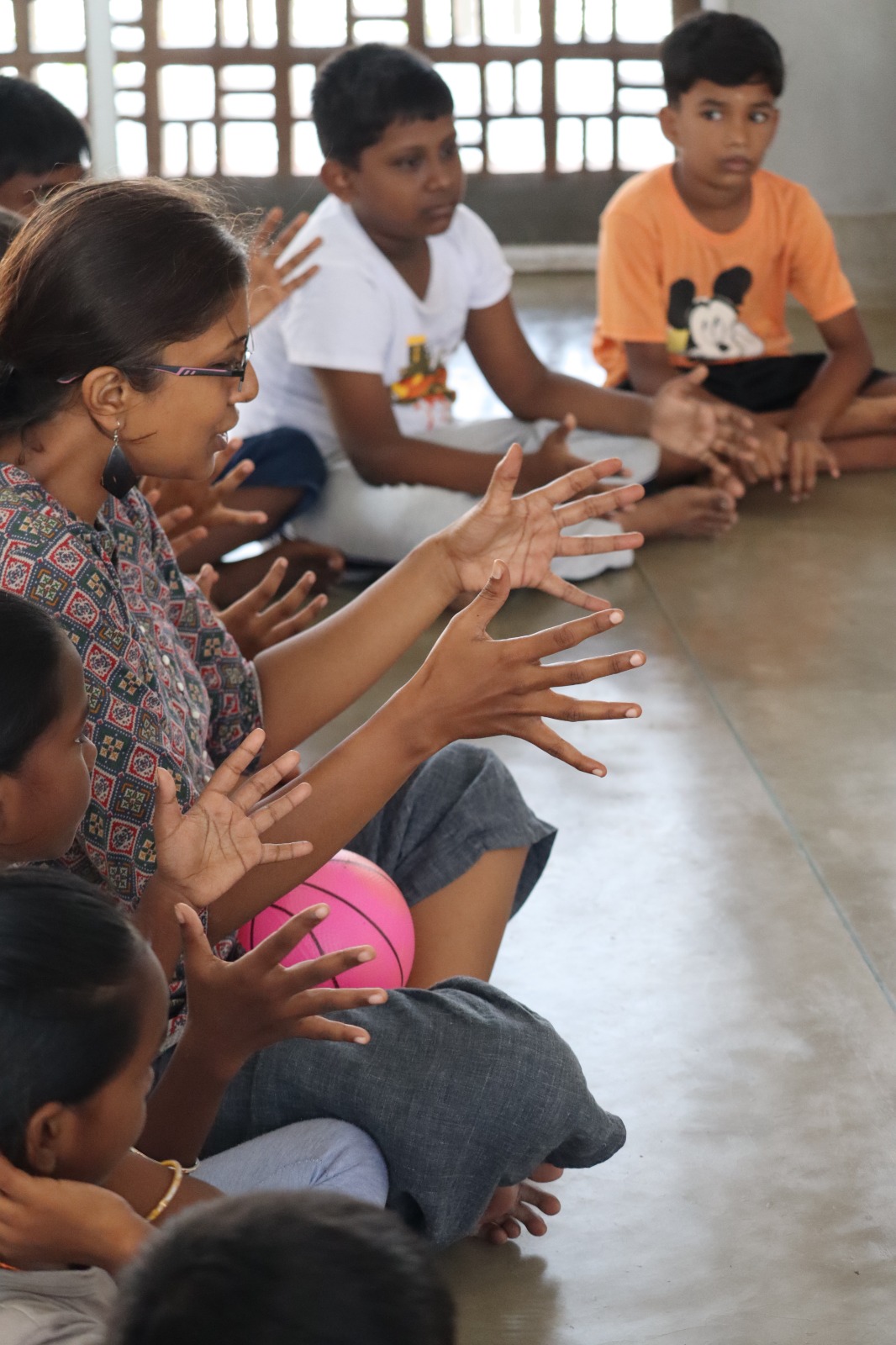
Over the span of four weeks team members from Sharana facilitated multiple Expressive Art Therapy sessions for children and adolescents participating in their Annual Summer Camp. The Art Room at the Sharana Social Centre (Puducherry) as well as the Angalakupam rural Community Centre (Angalakupam) served as the two venues for conducting these sessions. Mr. Manuel Theremand (Sharana’s in-house Expressive Arts Practitioner) and Ms. Romila Sil (Dance Movement Therapy facilitator-in-training) facilitated around 31 hours of expressive art across 21 sessions at the two venues. These sessions were attended by children and adolescents anywhere between the age range of 5-15 years, with an average group size of 30-35 participants in each session.
The intention behind the expressive art sessions for the summer camp revolved around enhancing expressivity in the participants. This was done by working with an awareness of their body and breath, by using imagery and rhythm-based activities to help them build their personal movement language, and by encouraging interactions within the group through multiple approaches in nonverbal communication. At the core of these sessions lay the understanding that children could only explore and express themselves uninhibitedly when a safe and non-judgemental space could be created for them. And to create this safe space required working towards a certain level of trust building between the participants and the facilitators, along with progressively building a sense of agency and choice-making within each child.
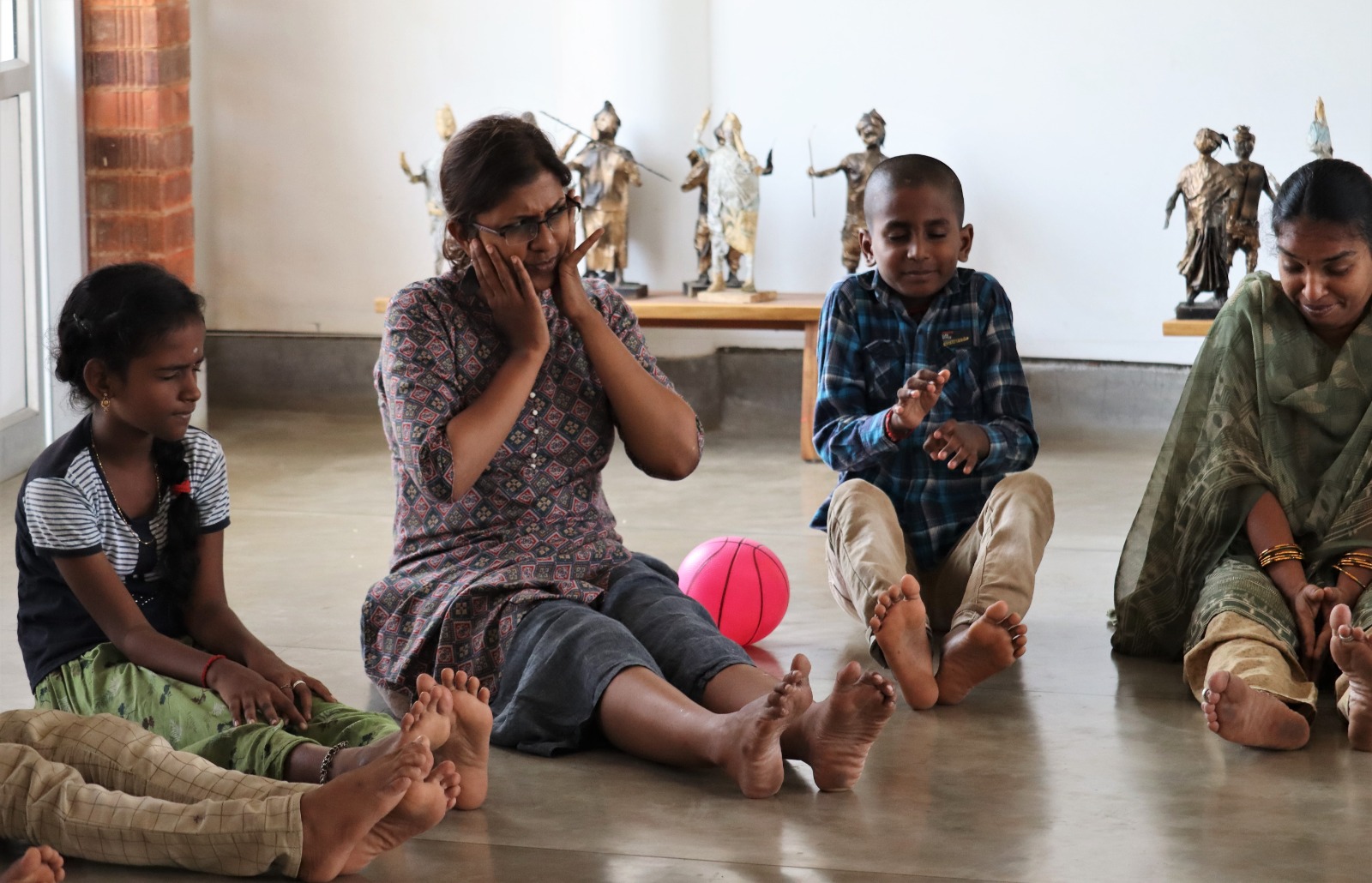
With these intentions in mind, every day the session was planned in a way so as to provide a varied texture of movement possibilities for the participants to experience and explore, either through the use of props (like balloons, ribbons, dupattas, woollen threads) or through the seeding of new, unfamiliar and imaginative movements. The movement activities would then seamlessly transition into art expressions that utilised a range of mediums – sometimes it would be acrylic paints, sometimes crayons, pastels or sketch pens. At many points in the sessions, instrumental music was used to set the pace of the activity and to inspire creative responses in the participants.
Quite a number of sessions were based on specific themes designed to encourage the children to move towards a deeper level of awareness. The theme of Love opened an avenue for discussion about the various kinds of love one experiences in one’s life, beyond the common notion of romance. In another session, using two pebbles to replicate the sound of one’s heartbeat allowed the opportunity for the children to become quieter and synchronise with their body rhythm. The theme of drawing one’s personal imaginary rainbow of any colour, shape or texture sparked the creative freedom of the children and was a step towards encouraging them in their personal choice-making process.
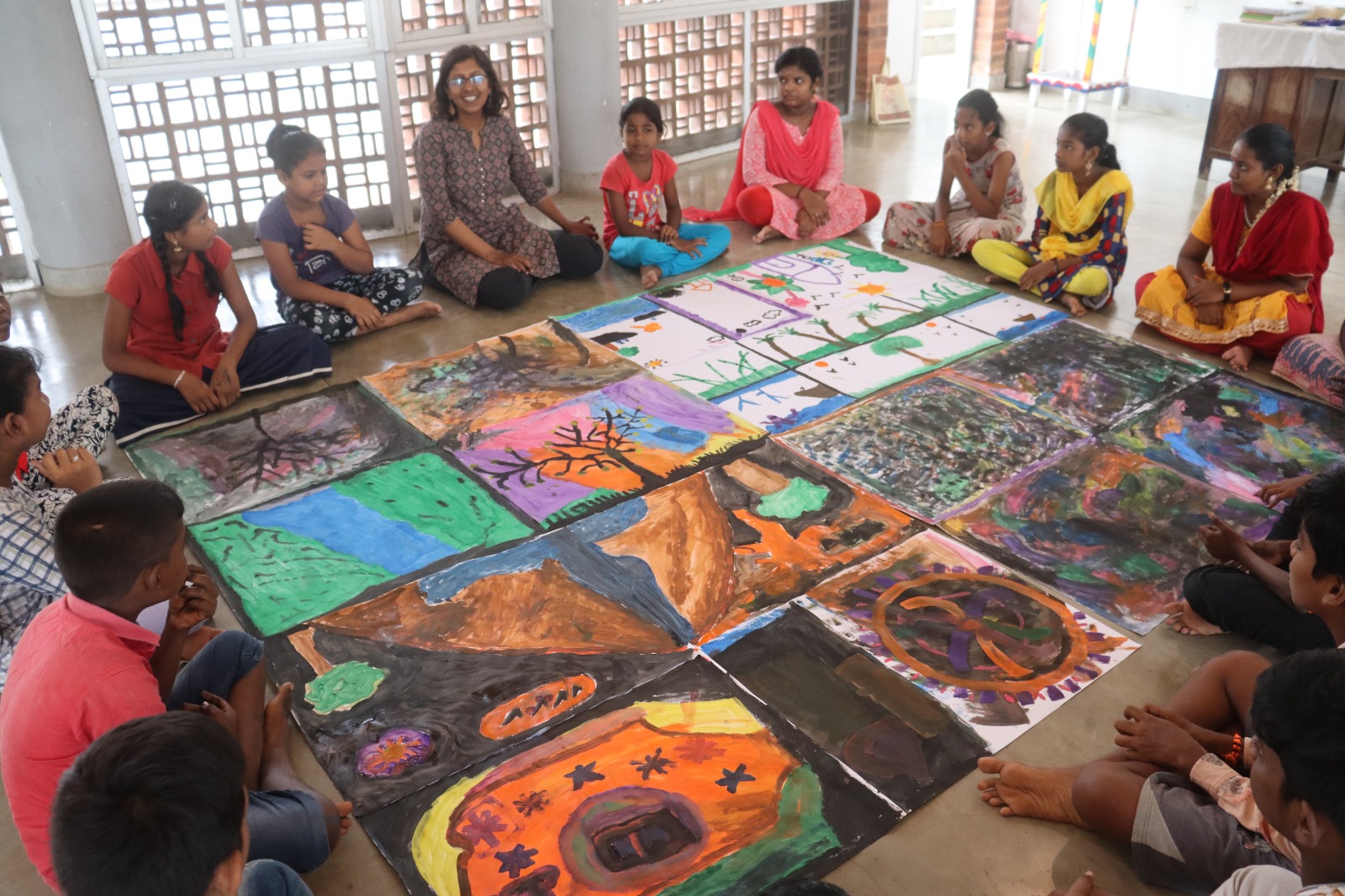 One particular session was specifically facilitated for a small group of pre-adolescent and adolescent girls pertaining to the theme of finding one’s inner strength under different challenging circumstances. Through the enactment of movements that surfaced in their body and eventually through the embodiment of their inner strength, a deeper process seemed to have been sparked off in some of the participants. This was channelized further whereby participants worked together in smaller groups to come up with their own movement choreography, at the end of which they shared about the feelings that came up for them. By the end of the session a subtle change could be observed in their facial expression and body attitude as the children left the room.
One particular session was specifically facilitated for a small group of pre-adolescent and adolescent girls pertaining to the theme of finding one’s inner strength under different challenging circumstances. Through the enactment of movements that surfaced in their body and eventually through the embodiment of their inner strength, a deeper process seemed to have been sparked off in some of the participants. This was channelized further whereby participants worked together in smaller groups to come up with their own movement choreography, at the end of which they shared about the feelings that came up for them. By the end of the session a subtle change could be observed in their facial expression and body attitude as the children left the room.
The feedback from the participants came when they verbally reflected on how they experienced the different activities. Though many of them were shy and hesitant to share in the first few weeks of the summer camp, by the last week of the camp there were a few who became more vocal and expressive in their verbal sharing. However, it was the non-verbal feedback from the participants that threw light upon the significance of the Expressive Art sessions. As a whole, the participants seemed more alive and spontaneous, having dropped some of their inhibitions to movement expression. Some of them were experimenting with their own improvised movements, rather than trying to imitate the facilitators’ movements. Many of them became more receptive to moving beyond their zone of comfort and knowing to trying out something unfamiliar. The combination of creative movement activities intertwined with artistic expressions worked in a manner that was quite significant – by working with their body in the first part of the session, the participants could direct whatever channels opened within themselves and project that onto the external medium of an aesthetic response or a choreographed movement sequence.
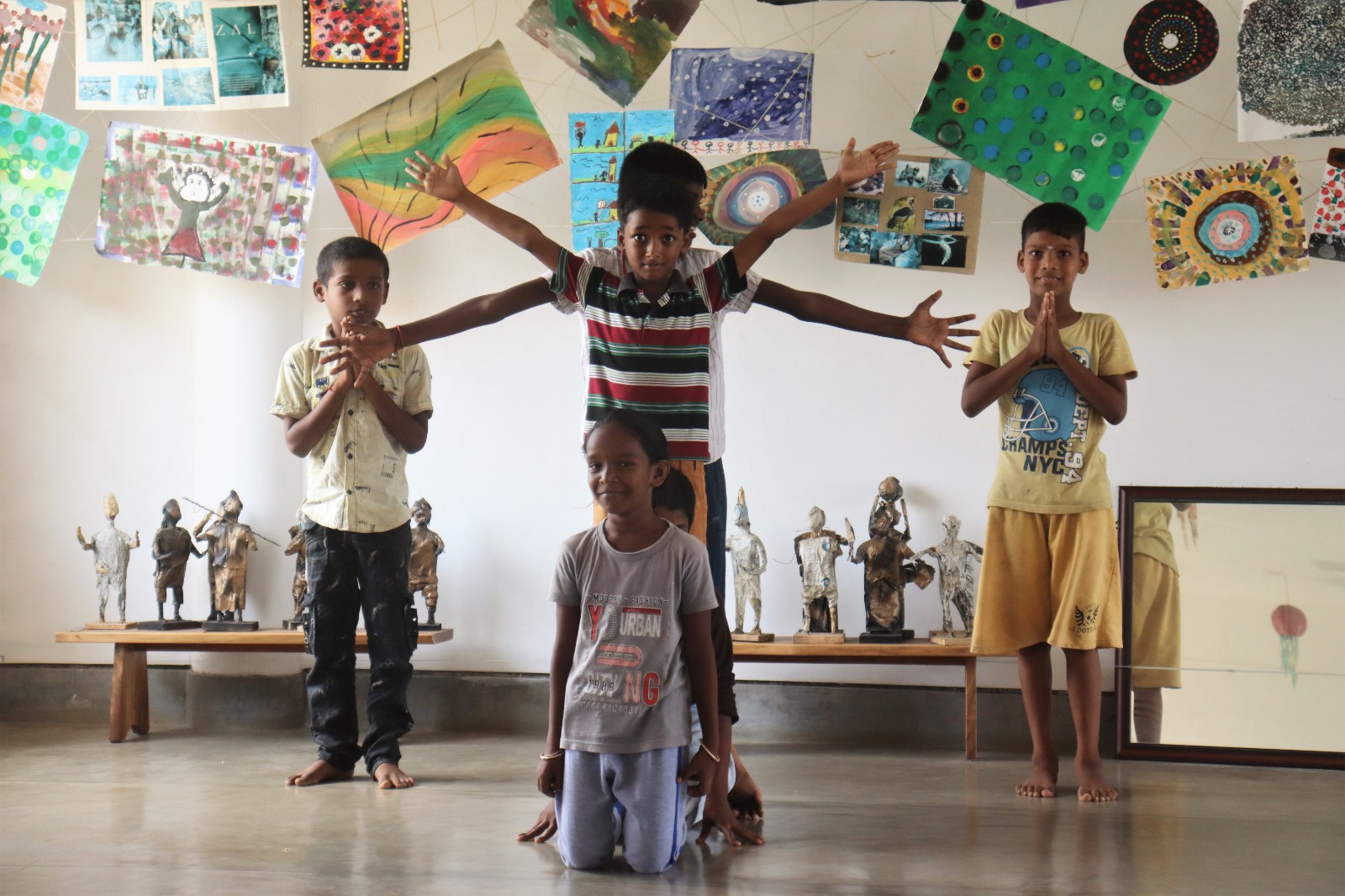
The four weeks of sessions helped with seeding movement possibilities in the children beyond that which they were accustomed to in their day-to-day context; they were also beginning to explore and create their own movement language with more confidence.
In every being there is an underlying unspoken need to be seen and acknowledged. It starts from interactions with the external world where one is acknowledged and seen by the world. It then slowly moves inwards to one acknowledging one’s self. Expressive Art therapy follows a similar course of the healing process – by working through the body or through an art-based medium a subtle acknowledgement takes place in the external world. Gradually the reflective process turns inwards and one sees and acknowledges oneself for the being one is.
Such is the process that Sharana hopes to tread in the larger vision with its expressive art therapy sessions.
